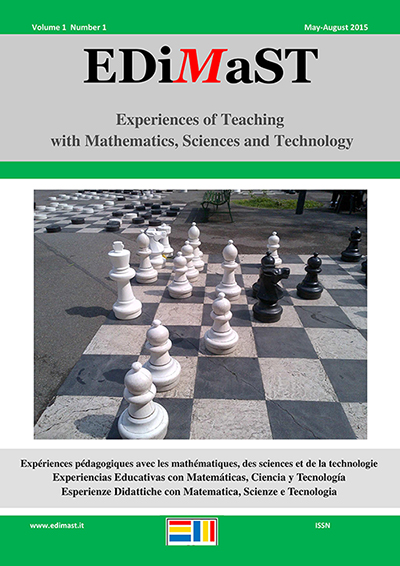Innovative tools to motivate student
Keywords:
App, LIM, project, Science,Abstract
In the twenty-first century approach to the study has changed dramatically: the major problems are found in the students who live in degraded social background or suburbs where most there is a lack of motivation to study and strongly increases the abandonment and truancy. My school has joined the project "EDURISK" in which takes part researchers, school and all the citizens, and that involves them in a project of training and discovery of seismic risk, as a tool to initiate strategies for prevention and reduction of natural hazards. To appeal to the students of the second classes of secondary school 1st grade to the problem of seismic and volcanic risk existing in the municipality pertaining to the school, it was proposed to work with a multidisciplinary project and collaborative methodology. With the help of LIM, on the project site you can also browse Links related to investigate the issue and you can work in the classroom with the handouts that the USR provided us; you can decide to download Telegram App on smartphones to create a group with students and teachers of the class to continue working beyond the school day and to share individual or group research. Participation in a closed group with teachers and students led to the realization that you can get much better at exploiting the technology and its applications. Finally, chosen an e-book as the final product, the app is also used to record sounds and voices that could be included.References
Artigue, M. (2001). Learning mathematics in a CAS environment: the genesis of a reflection about instrumentation and the dialectics between technical and conceptual work. Paper presented at the 2° CAME Symposium, Utrecht, The Netherlands.
Buckingham, D. (1993). Children Talking Television: The Making of Television Literacy. London: Falmer Press.
Calvani, A., Fini, A., Ranieri, M., (2010). Competenza digitale nella scuola. Erickson.
Carletti, A. e Varani, A. (2004). Didattica costruttivista. Trento, Erickson.
D’Amore, B. (1999). Elementi di Didattica della matematica. Bologna: Pitagora. X edizione 2005.
D’Amore, B. (2004). Il ruolo dell’Epistemologia nella formazione degli insegnanti di Matematica nella scuola secondaria. La matematica e la sua didattica, 4, 4-30.
D’Amore, B., Fandiño Pinilla M.I. (2006). Che problema i problemi! L’insegnamento della matematica e delle scienze integrate. 6, vol. 29 AB. 645-664. Editore: Centro Morin, Paderno del Grappa (TV). ISSN:1123-7570.
Laborde, C. (2003). “The design of curriculum with technology: lessons from projects based on dynamic geometry environments” CAME Symposium, Reims, June 23 and 24, 2003.
Lagrange, J.B. (2003). Analysing the impact of ICT on mathematics teaching practices. CERME 3, Bellaria, Italy, 28 Febbraio-3 Marzo 2003.
MPI (2012). Indicazioni per il curricolo per la scuola per l’infanzia e per il primo ciclo di istruzione.
Robutti, O. & Ferrara, F. (2002). Approaching graphs with motion experiences, In: A. D. Cockbrun & E. Nardi (eds.). Proceedings PME 26, Norwich, UK, 4.
Zan, R. (2010). “La valorizzazione dell’errore”, Seminario PQM, Napoli 3-5 novembre 2010. Wenger, E. (1998). Communities of Practice. Learning, Mearning and Identity, Cambridge: Cambridge University Press, New York.





